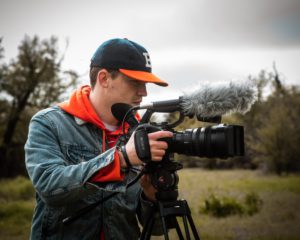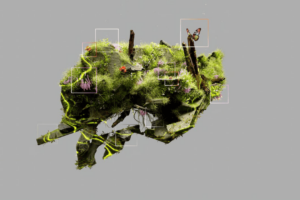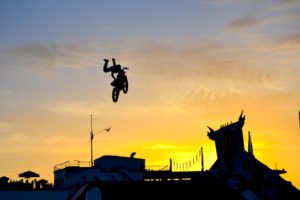What Does a Director of Photography Do?
A director of photography, also called a cinematographer, DP, or DoP, shapes how a film or television series looks. They manage the camera and lighting crews. Producers usually hire DoPs at directors’ recommendations. They are heavily involved during pre-production and active during the production phase, though they have limited involvement in post-production.
Pre-Production
Pre-production duties include:
- Brainstorming how to visually interpret the script with the director, production designer, and art department
- Hiring camera and lighting crew
- Breaking down the script and creating or supervising the storyboards
- Visiting potential filming locations with location scout and assessing their suitability
- Selecting digital or film cameras and accessories, including lenses and filters
- Designing the lighting setup for every scene
Production
During production, the director of photography builds on their pre-production plans. Their duties during this time may include:
- Blocking scenes with the director
- Checking that all camera and lighting equipment is in good working order
- Directing the camera and lighting crews during shooting so they create footage according to plans
- Changing or tweaking initial ideas about lighting, framing, and movements to suit conditions and script changes
- Calling for makeup and wardrobe adjustments as necessary
- Reviewing dailies with the director to ensure all raw footage matches creative vision
In small productions, directors of photography may also shoot some scenes.
Post-Production
The director of photography’s work is almost done once production wraps. During post-production, they develop the mise-en-scène with editors and colorists.
Essential Skills for a Director of Photography
A director of photography relies on technical and leadership skills to succeed, including:
- Deep film and photography knowledge, including composition, lighting, cameras, editing, and film history
- Technical camera operation skills
- Collaboration and teamwork
- Leadership
- Organization and time management
- Problem-solving
- Verbal and written communication skills
- Financial management and budgeting
- Conflict resolution
What Else Do Directors of Photography Need?
Strong technical and leadership skills matter, but they are not all directors of photography need. These professionals also require:
- Artistic vision and creativity
- Good judgment and efficient decision-making
- Their own camera for practice
- A strong portfolio or reel of camera work
- A business card and website for self-promotion
What Should I Include in My Director of Photography Reel?
A director of photography reel or portfolio is a collection of camera work that promotes their artistic vision. It should include:
- Your best shots
- Shots that show a clear artistic style
- Raw footage to separate your work from editors’ work
- A diverse selection of shots
- Shots that tell your story
- Either a montage or full scenes
Education and Experience
Many directors of photography learn the fundamentals of camera operation, lighting, and film theory at film school. A director of photography is not an entry-level role.
Many aspiring directors of photography start working as lighting technicians or camera operators. They may then become camera assistants, working directly under a director of photography. After observing a director of photography at work, they may transition to this role. An apprenticeship can also provide valuable experience for an aspiring director of photography.
How Do I Get Started as a Director of Photography?
Transitioning to a director of photography position can be challenging, but these tips should help:
- Start creating. Whether you’re using a smartphone or a high-end camera, creating your own original work is an important first step.
- Volunteer. Working on student films or other independent productions can boost your resume and help you secure your dream job.
- Build your network. Often, opportunities in film are not advertised. Instead, they typically come from the people you know. Stay in touch with other film school students and industry professionals you meet.
- Practice often. Shoot what is around you, experimenting with different techniques to learn more about your craft.
What Is the Lifestyle of a Director of Photography?
Directors of photography have unconventional lifestyles. They work irregular hours and travel often, scouting locations and working on film sets. They can also experience long periods of downtime between projects, which is especially common for directors of photography trying to establish themselves.
How Much Money Does a Director of Photography Make?
The average director of photography salary ranges from $28,000 to $100,000 per year. Salaries vary according to each project’s budget, the director of photography’s experience, and how regular their work is. Periods without employment can also contribute to lower yearly earnings.
What is the Growth Rate for Directors of Photography?
The U.S. Bureau of Labor Statistics groups directors of photography with film and video editors and camera operators. It predicts opportunities for these professionals will grow by 18% between 2019 and 2029, which is above the national average. The increase of online platforms, such as streaming services, will fuel growth for directors of photography.
Are Directors of Photography Part of a Union?
Directors of photography can join the International Cinematographers Guild Local 600. This union promotes the recognition of directors of photography and camera crew. Member benefits include:
- Contract negotiation
- Minimum wage requirements
- Medical plans
However, union fees can be substantial for new directors of photography. It may be worth delaying membership for a few years until your work is more consistent.
Where Do I Find Work as a Director of Photography?
There are several places directors of photography can find work, including:
- Through personal connections
- Through a professional network
- On online job boards
Who Does a Director of Photography Work With?
Directors of photography work closely with many members of the film crew, including:
- Director
- Camera operator
- Steadicam operator
- Script supervisor
- First assistant camera
- Second assistant camera
- Digital imaging technician
- Data wrangler
- Video assist operator
- Camera trainee
- Location scout
- Colorist
How Acclaimed Directors Work With Their Cinematographers
Many directors have special relationships with directors of photography. Some of these relationships span decades, while others are brief but significant. Discover more about the relationships acclaimed directors have with their directors of photography.
Martin Scorsese and Freddie Francis
Martin Scorsese and Freddie Francis made just one film together: the 1991 thriller “Cape Fear.” However, Scorsese had long admired Francis’ work on classic Hollywood films from the 1950s and 1960s. Francis showed Scorsese the way subtle framing differences can make a real impact. One scene from their movie shows Sam (Nick Nolte) looking through a window at Max (Robert de Niro) terrorizing Nolte’s onscreen wife (Jessica Lange). The original shot showed Nolte’s two eyes, but Scorsese didn’t think it was right. Francis suggesting showing just one eye, which made the scene much more mysterious and unsettling.
Spike Lee and Ernest Dickerson
Spike Lee attended college with his long-time director of photography, Ernest Dickerson. They made seven films together, including the biopic “Malcolm X.” Dickerson suggested using a double dolly shot to give the sense that Malcolm (Denzel Washington) was deep in thought, assessing his place in the world and his own mortality.
Mira Nair and Declan Quinn
Mira Nair is a collaborative filmmaker, bringing key personnel, like the director of photography, onto projects early and working with them closely to develop the film’s vision. She has worked with Declan Quinn on six different film projects, including her celebrated 2001 drama ” Monsoon Wedding.”
Quinn shot the entire film on a hand-held camera using a fluid style, which made the movie seem candid and personal. They blocked scenes knowing the camera could land anywhere at any moment. Quinn took on the role of observer, using the camera to link characters as the action unfolded. For example, one of the movie’s key moments came when an oblivious wedding photographer asked Ria (Shefali Shah) to sit at her abuser’s feet. The camera captures her looking up at her uncle, the man who should have protected her. The framing connects them in a subtle but powerful way.
If you have an eye for aesthetics and creative vision, working as a director of photography can be a rewarding career move. If you’re interested in learning more about being a director of photography, apply to Nashville Film Institute to gain professional qualifications as a filmmaker.















